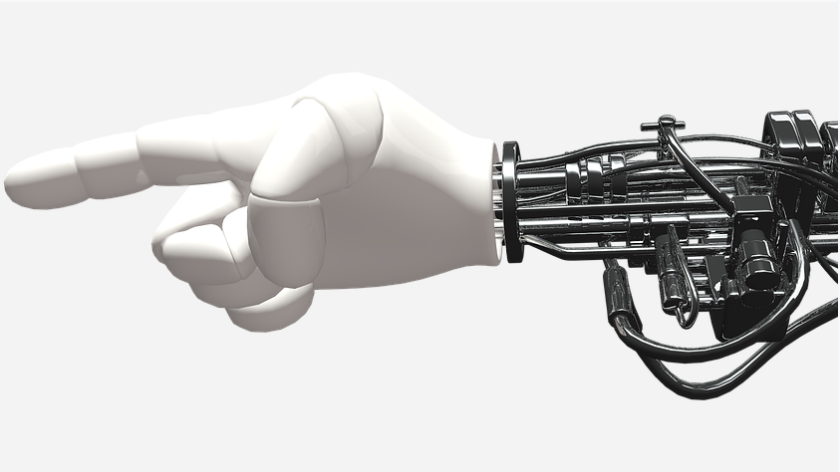
Transforming Healthcare: Three Trends Shaping The Industry
Transforming Healthcare: Three Trends Shaping The Industry
Critics have long faulted U.S. medical education for being hidebound, imperious and out of touch with modern health-care needs. The core structure of medical school—two years of basic science followed by two years of clinical work—has been in place since 1910.
Now a wave of innovation is sweeping through medical schools, much of it aimed at producing young doctors who are better prepared to meet the demands of the nation’s changing health-care system.
With increased patient volumes and fewer staff members, rapid scientific progress, growing consumerism, and increasingly outcome-oriented compensation models, the environment for healthcare providers around the world is changing. These challenges drive healthcare providers to rethink their business approaches and seek new solutions to lower costs. On the way of answering the question how to control risk and meet demands while continuing to provide quality of care, three trends are emerging: consolidation, standardization, and managing health.
Consolidation
The creation of larger affiliated entities, such as Integrated Delivery Networks (IDNs), are proving to offer advantages and enable sustainability. There are two main reasons for consolidation: The changes of reimbursement models and their accompanying financial challenges like we see in the USA and the rapidly growing healthcare sector in emerging markets with huge potential for investors.
Few healthcare providers have the necessary financial resources and organizational prerequisites to navigate the transformation of the healthcare industry on their own. Mergers and acquisitions are increasing, and the consolidation trend will gather even more momentum in the coming years. In addition, other kinds of business combinations between healthcare providers, such as joint ventures, strategic partnerships, and cooperation arrangements, are becoming more common.
This leads to the creation of large healthcare networks, hospital and laboratory chains that increasingly resemble corporations, many of which have elevated their operations to an international dimension. Such “XXL-sized healthcare providers” intend to attain competitive advantages on the strength of a broader or deeper offering of specialized services, as well as cost savings resulting from synergies and economies of scale.
These developments will reshape the hospital landscape in industrialized countries, leading to new giants with several billion dollars in annual revenue. For example, the consulting firm Deloitte estimates that, by the end of the current consolidation phase, only around half of the current health systems in the U.S. will remain.
Emerging markets are also experiencing a growing number of hospital mergers and acquisitions. The underlying reasons are different, however. Foreign and domestic investors, as well as hospital operators, invest in India or China because of their high growth potential. They are bringing successful models to new geographies.
Standardization
Taking advantage of the standardization that other industries have capitalized upon can help drive common processes, reduce unintended variability, and ensure consistency in results.
Among the levers for optimization, addressing staff shortage and overcoming operational inefficiencies are key success factors for staying competitive.
Addressing staff shortages can be managed by increasing workforce productivity and optimizing employee satisfaction: Automation, for instance, reduces the manual workload involved in setting up or evaluating clinical protocols. Doctors and nurses spend less time on administrative tasks, which reduces loss of information and frictional losses. In addition, targeted training enables a more flexible use of staff – a key aspect of business management. The flexible deployment of staff also increases employee satisfaction as their tasks become more varied. Additionally, modern information management is crucial for the speed and accuracy of care decisions.
Avoiding operational inefficiencies: There is a close connection between the workforce topic and the effects on patient throughput, wait times, and return on investment. This is exactly where digital fleet management portals can help. By closely monitoring medical equipment, these systems help to detect workflow problems, facilitate maintenance as well as investment planning, and thus could reduce inefficient underuse of costly devices.
Managing Health
The trend towards comprehensive health management is likewise motivated by the need to lower costs. Population health management – health management of entire population groups – is of growing importance. It involves the stratification of patients into well-defined risk groups and the creation of differential care strategies based on the group’s needs. In general, the idea is to heal patients as quickly as possible and stabilize patients with chronic diseases by means of high-quality treatment and seamlessly coordinated care. Most of all, however, health management aims to prevent people from becoming ill in the first place.
While in the past, the pure provision of a medical exam, diagnostic or a therapeutic procedure was justifying reimbursement (fee-for-service), increasingly, reimbursement is being tied to the achieved outcome (fee-for-value). Today, cost bearers define quality standards and measure them while healthcare providers receive a bonus for success, and a penalty for non-performance.
The transition to a value-based healthcare system requires fundamental changes to the business model and IT infrastructure as well as close collaboration of different stakeholders such as providers, payers, and patients. Healthcare providers are increasingly relying on complex data analytics as well as transparent and complete information – to ensure consistent high-quality and high-value care, while reducing the need for high-cost medical services.
Expectations towards the healthcare industry
Technology manufacturers play a key role as the reliable partner for healthcare providers trying to cope with the industry transformation. Paramount are a deep understanding of the entire continuum of care, a comprehensive portfolio covering prevention, diagnosis, and therapy, as well as the size and financial power to share entrepreneurial risks to make healthcare providers succeed in enabling better outcomes at lower costs.
Find more information in Siemens Healthineers Trend Book 2017 – Transforming Healthcare.











Recent Comments